La Gomera It is a very green island, being full of lush laurel forests, and sweet, for its palm honey, which is extracted from its palm trees. From his land arises the Forastera grape and from its air the whistle, which spread through the ravines. It is an island, in short, ideal for hiking, in the Garajonay National Park, and for dolphin and whale watching.
The first thing that was planted on the island was sugar cane, brought there by the Portuguese from Madeira. They came to be in La Gomera six sugar mills in the XNUMXth century. The assimilation of the natives to European culture was precisely through the ingenuity. As the United States flooded the sugar market, the mills disappeared in the XNUMXth century.
Products from La Gomera
The production of sugar cane takes us to the so-called "honey" of Palma. It is made with palm tree sap, known as the guarapo, which the aborigines were already taking advantage of. To extract it, you have to climb the palm tree, make a cut and leave a bucket overnight and the next morning lower it. Before it ferments, it is boiled for several hours. In this way it becomes a dark and very sweet syrup. It is a unique product of La Gomera, the island with the largest number of palm trees in the Canary Islands, more than 12.000. In the Casa de la Miel de Palma, in Host, explain the elaboration process with images.
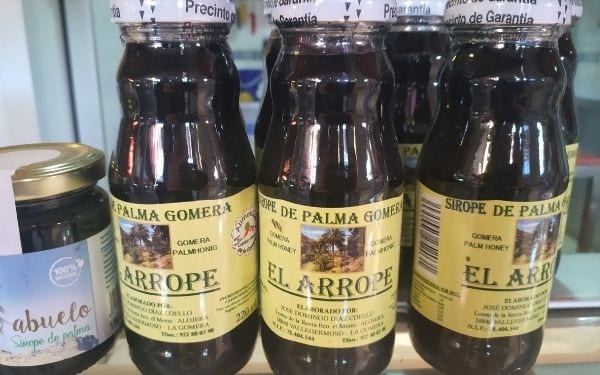
Canary black bee honey
Due to its size (378 square kilometers) the island has a high proportion of honey. In addition to the one in Palma, it has 2.000 hives to produce honey. José Miguel Arzola is one of a hundred beekeepers and the only one who makes organic honey that is called Jirdan on the island. It has 35 hives of Canary black bee. Most of their honey production, which is multifloral, goes to Tenerife.
"Before it crystallizes, I break those crystals, leaving them smaller so that it can be spread," he tells us. “In 2015 I started making honey for my uncle, José Arzola. Now he is 91 years old and is the longest-lived beekeeper on the island ”. Curious is his point of sale: a kind of newspaper machine at the entrance of his farm where the money is put in and the pot of honey comes out.
The island never had water problems, unlike El Hierro. This was one of the reasons why Christopher Columbus stopped in La Gomera to bring water for the trip. In the port of San Sebastián he made a stopover on the voyage of discovery and on the two subsequent voyages.
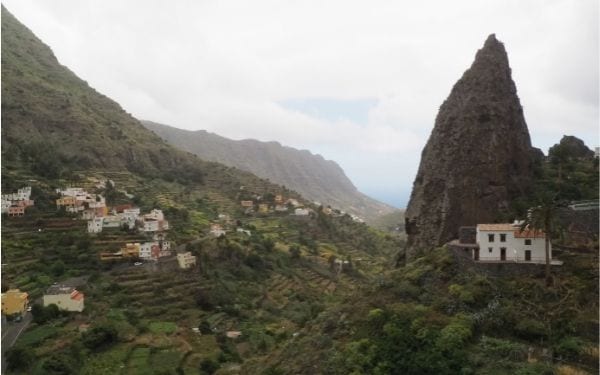
One of the areas with the most water on the island is the Hermigua Valley, where until the 80s everything was banana cultivation. Now there is potatoes, squash, zucchini and new avocado and mango crops. Here too the yam, a tuber that is collected every two years and is taken on special occasions. You have to cook it for 12 hours to remove the itch.

Gomeran wines
Within Gomeran wines the most representative variety of La Gomera is white stranger. With an abrupt orography and very difficult to cultivate, the vineyards are declining and there is no generation of replacement, according to José Marín, from the El Guanche winery, where it produces the wines Niray. He opened the winery ten years ago with the land bought by his grandfather, who made money in Cuba with tobacco. Make a dry white with 90% Forastera and 10% Listán blanco.
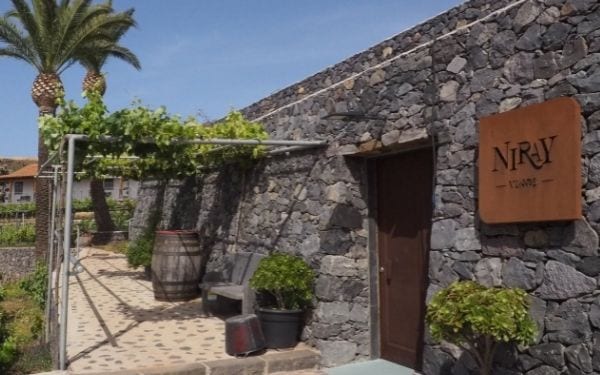
"Before on the island we grew potatoes and grapes were used at the extremes," he tells us. A few years ago he dared to plant, next to the Forastera and the Listán, Syrah and Tempranillo vineyards. "There was no in La Gomera and we got a big surprise. The grape behaves in an exceptional way ”, he assures.
The whistle
Through these ravines the rubber whistle circulated, a whistle arising from the need of the aborigines to communicate through these heights. In fact, the echo of the ravines helped it spread. First the name was said and then messages such as “here's a goat of yours”, “someone is sick” or “come home”. The gomeros later adapted it to the Spanish language and today it is taught in schools. In 2009 it was recognized as an Intangible Cultural Heritage of Humanity.
At Old School Restaurant, in Agulo, they show a whistle. There they explain to us that it is like talking and whistling at the same time. To eat we have almogrote, the paté gomero, cream made from old cheese or cured cheese, garlic, pepper and oil. Also watercress stew with gofio and mojo, tuna in mojo, goat meat and fiesta meat. And for dessert, gofio's mouse.
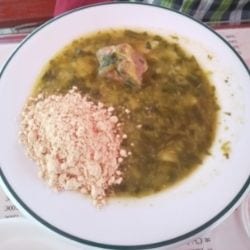
Traditionally the island's way of life was based on the cereal farming to make gofio, which was the only diet of the Gomerans at breakfast, lunch and dinner. Now only 5% live from agriculture. To transport us to the past and see how it is made there is nothing better than "La Molina Vieja", in Las Rosas, where we find a mill from 1919. It was restored by Alcibiades García, who makes with it a totally handmade gofio, unique in Canary Islands.
Another of its riches, hiking
Even more to the past the Garojanay National Park. This park is a world reference in the conservation of the laurel, relic of the Tertiary Era, which grows thanks to the high humidity. All this generated by the mists of the aliseos. The most visited forest is The Cedar. This tree is from the same family as the juniper but larger. The heather is the explorer, the one who conquers what has just been abandoned, it grows when the forest deteriorates and there is a lot of light. When it is shady the laurels grow.
Walking through here you can see the effect of horizontal rain, in the fact that where there are trees the ground is wet, and where there are no trees, it is dry, contrary to what normally happens. There are up to 400 km of hiking trails on the island. They correspond to the ancient roads by which people moved and communicated with the whistle.
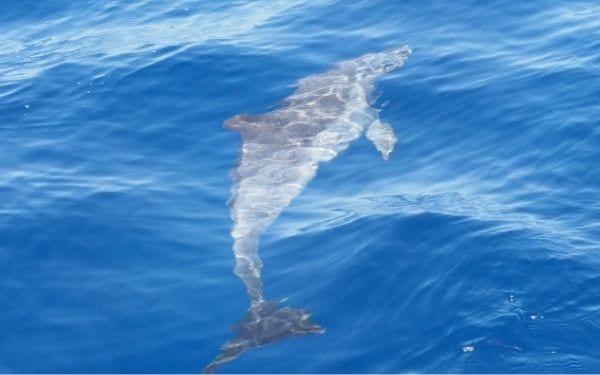
There are also hiking trails in the Valle Gran Rey, in the southwest of the island, from where boats also depart to watch dolphins and whales. La Gomera is one of the places with the greatest diversity of cetaceans in the world. This is because the trade winds create strong currents that bring nutrients to the animals. Also here they can be seen throughout the year, unlike other places where the sighting is seasonal. With Pura Vida Excursions dolphins and whales are seen with classical music in the background. In the Valle Gran Rey is the Charco del Conde restaurant, better known as Casa Ciro, with homemade food and with good views.
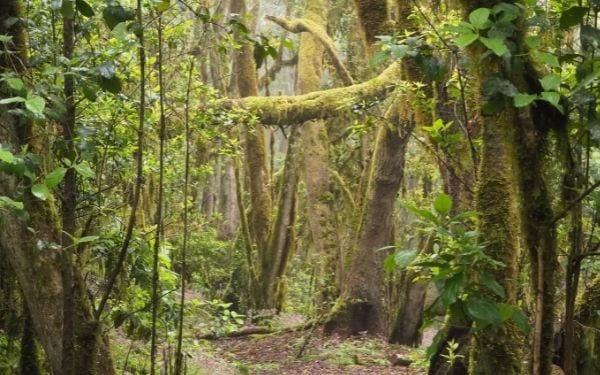
All this is what the landscape diversity of La Gomera, among great products and tourism activities among its beautiful green nature.







